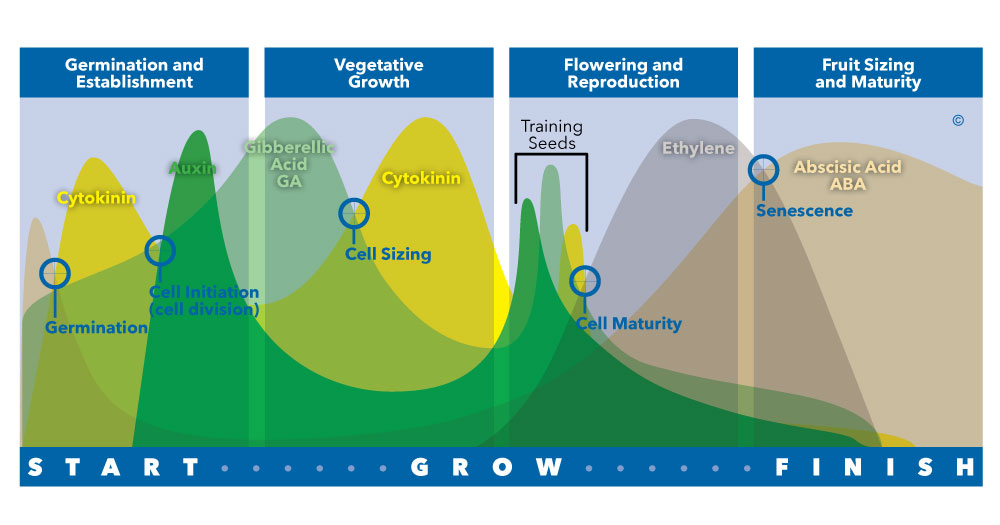Introduction to Plant Hormones: Cytokinin – The Dispatcher
Plants have hormones just like humans. Plants produce and emit hormones based on the environment and physiological processes that are occurring at any given time throughout the plant life cycle. Each week we will feature one of the 5 major plant hormones, starting with Cytokinin, the dispatcher.
Growth Hormones
- Cytokinin: The Dispatcher
- Auxin: The Activator
- Gibberellic Acid (GA): The Sizer
Growth Hormones
- Ethylene: The Regulator
- Abscisic Acid (ABA): The Terminator
Plant hormones, nutrients and hormone co-factors regulate plant growth and reproduction much like hormones, nutrition and vitamins regulate growth in humans and animals.
Cytokinin: The Dispatcher
Cytokinin is the dispatcher hormone that signals the hormone events controlling cell division and differentiation:
- Cytokinin is primarily produced in root tip meristematic tissue.
- Cytokinin movement upward in the plant stimulates shoot formation and branching. New shoot tissues make auxin that is transported down the plant where it combines with cytokinin to cause cell division for new root tip growth:
- The ratio of auxin to cytokinin determines the type of growth: more auxin = root growth, more cytokinin = shoot growth
- Maintaining new meristematic root growth is critical for optimal development of the plant
- Cytokinin acts to reduce senescence (aging) of the plant. The lack of cytokinin allows ABA levels to build higher in the plant. The synthesis or addition of cytokinin reduces the level of ABA in the plant enabling it to maintain its youthful vigor.
- Since nitrate nitrogen is absorbed by the roots to synthesize cytokinin, a certain amount of nitrogen can be replaced by directly applying cytokinin with hormone co-factors.
Contact your Stoller sales representative for more information.

